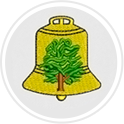Public Sector Equality Duty
Equalities and Diversity in the Curriculum
Our curriculum ‘year’ is divided into three cycles which builds pupil knowledge of the world.
Our curriculum is built around The Equalities Act of 2010 and the Protected Characteristics. The
Protected Characteristics
The 2010 Equality Act makes it an offense to discriminate against a person due to the 9 protected characteristic(s). At Renishaw Primary School no form of discrimination is tolerated and our pupils show respect for those who share the protected characteristics.
The protected characteristics are deliberately and specifically planned into the whole school curriculum and taught through significant people and events in history – people who have faced barriers or discrimination because of their differences, and how they were able to overcome those barriers. We also use the power of storytelling to explore each protected characteristic in each year group. Each class have a collection of stories that exemplify each protected characteristic
There are opportunities for pupils to reflect, discuss and give their own views on attitudes towards the protected characteristics in the past and how these might be similar or different from attitudes that exist today.
It is against the law to discriminate against someone because of:
Age
A person belonging to a particular age (for example 32 year olds) or range of ages (for example 18 to 30 year olds).
Disability
A person has a disability if she or he has a physical or mental impairment which has a substantial and long-term adverse effect on that person's ability to carry out normal day-to-day activities.
Gender reassignment
The process of transitioning from one sex to another.
Marriage and civil partnership
Marriage is a union between a man and a woman or between a same-sex couple.
Same-sex couples can also have their relationships legally recognised as 'civil partnerships'. Civil partners must not be treated less favourably than married couples (except where permitted by the Equality Act).
Pregnancy and maternity
Pregnancy is the condition of being pregnant or expecting a baby. Maternity refers to the period after the birth, and is linked to maternity leave in the employment context. In the non-work context, protection against maternity discrimination is for 26 weeks after giving birth, and this includes treating a woman unfavourably because she is breastfeeding.
Race
Refers to the protected characteristic of race. It refers to a group of people defined by their race, colour, and nationality (including citizenship) ethnic or national origins.
Religion and belief
Religion refers to any religion, including a lack of religion. Belief refers to any religious or philosophical belief and includes a lack of belief. Generally, a belief should affect your life choices or the way you live for it to be included in the definition.
Sex
A man or a woman.
Sexual orientation
Whether a person's sexual attraction is towards their own sex, the opposite sex or to both sexes.
The 9 Protected Characteristics are actively promoted in school through:
- Our school ethos statements, vision and values
- Our school Behaviour Policy
- Conscious role modelling by all adults in the school community
- Active engagement and communication with parents and carers
- A planned and carefully constructed calendar of assemblies across the year.
- British Values themes for week
- Discussion within curriculum subjects, taking a cross-curricular approach
- Promoting articulation by building appropriate language and a coherent vocabulary within all subjects but especially in Relationship, Social, Health and Economic Education sessions, Religious Education lessons, , LGBT discussions and Protected Characteristic talks
- Sporting, Art and Cultural events
- Pupil Voice and school Council
- Educational visits and real-life learning outside the classroom
- Guest speakers and visitors to school to supplement assembly themes.
- Developing links with local, national and international communities
- Extra-curricular activities, after-school clubs, charity work and work within the local community
